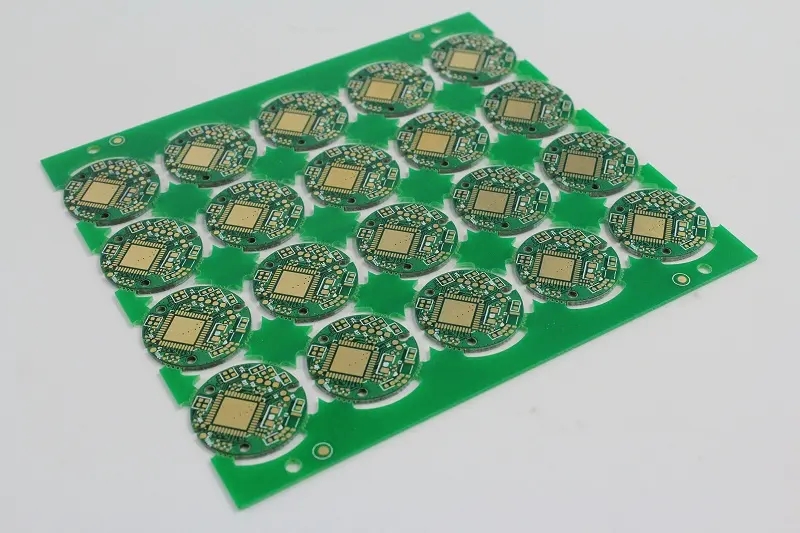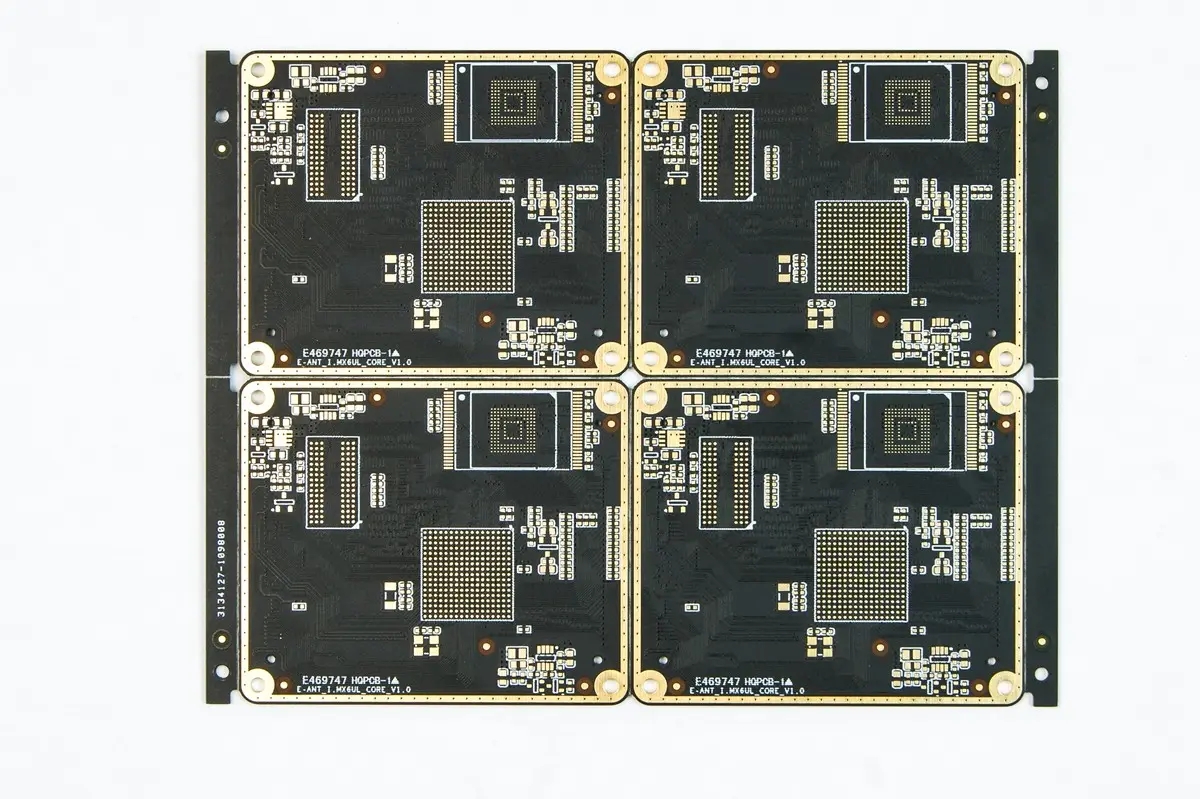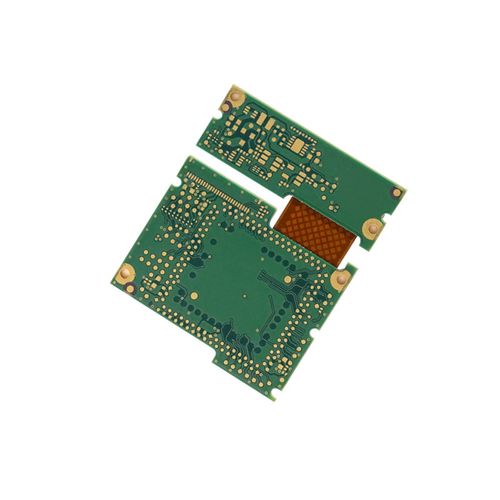
Causes of Blackening and Foaming of Electroplated Gold Layer on PCB
The causes and solutions of the blackening of the gold plating layer are discussed. As the production lines of each actual PCB factory use different equipment and liquid medicine systems. Therefore, it is necessary to carry out targeted analysis and handling solutions based on the product and the actual situation. Here are just three common problems for your reference.
1. Thickness control of electroplated nickel layer on circuit board
You must think Xiao Bian is dizzy. How can he talk about the thickness of the nickel plating layer when he talks about the blackening of the gold plating layer. In fact, the gold plating layer of PCB is generally very thin, which reflects that many surface problems of gold plating are caused by poor performance of nickel plating. Generally, the thin nickel plating layer will cause the product appearance to be white and black. Therefore, this is the first item to be checked by factory engineers. Generally, the thickness of nickel layer electroplating to about 5UM is sufficient.
2. Liquid medicine condition of nickel plating cylinder
I still want to talk about the nickel cylinder. If the liquid medicine of the nickel cylinder is not well maintained for a long time and carbon treatment is not carried out in time, the plated nickel layer will be easy to produce lamellar crystals, and the hardness and brittleness of the coating will increase. Serious problem of blackening coating. This is the control focus that many people tend to neglect. It is also often an important cause of problems. Therefore, please carefully check the liquid medicine condition of the production line of your circuit board factory, compare and analyze it, and conduct thorough carbon treatment in time to restore the activity of the liquid medicine and clean the electroplating solution. (It would be even bigger if carbon treatment was not available.)
3. Control of metal cylinder
Now comes the control of the gold cylinder. Generally, as long as good liquid medicine filtration and replenishment are maintained, the pollution degree and stability of the gold cylinder will be better than that of the nickel cylinder.
However, check whether the following aspects are good:
(1) Is the addition of gold cylinder supplement sufficient and excessive?
(2) How about the PH value control of PCB processing liquid medicine?
(3) What about conductive salts? If there is no problem in the inspection result, use AA machine to analyze the content of impurities in the solution. The liquid medicine status of the deposit tank. Finally, don't forget to check whether the gold cylinder filter cotton core has not been replaced for a long time. If so, you are not strictly controlled. Not soon to replace it.
Causes and Solutions of PCB Layer Bubbling
In the process of many varieties and small batch military production of circuit boards, many products also need lead tin plates. Especially for high-precision printed pcb multilayer boards with many varieties and few quantities, if the hot air leveling process is adopted, the manufacturing cost is obviously increased, the processing cycle is also long, and the construction is also very troublesome. For this reason, lead tin boards are usually used in PCB manufacturing, but there are many quality problems in PCB processing. The major quality problem is the delamination and blistering of lead tin coating on multilayer printed circuit board after infrared hot melting.

In the graphic electroplating process, tin plated lead alloy layer is widely used in printed pcb multilayer boards. it is not only used as the graphic metal anti-corrosion layer, but also mainly provides the protective layer and welding layer for lead tin boards. Because of the pattern electroplating etching process, both sides of the wire are still copper layers after the circuit pattern is etched, which is easy to contact with air to produce oxide layer or be corroded by acid and alkali media.
In addition, because the circuit pattern is easy to produce side etching during the etching process, the tin lead alloy plating part is suspended and a suspension layer is generated. It is easy to fall off, causing short circuit due to bridging between conductors. The exposed copper surface can be well protected by the infrared hot melting process. At the same time, the tin lead alloy coating on the surface and in the hole can be recrystallized after infrared melting to make the metal surface shiny. It not only improves the solderability of the connection points, but also ensures the reliability of the connection between the components and the inner and outer layers of the circuit. However, when it is used for infrared melting of multilayer printed circuit boards, the high temperature causes serious delamination and blistering between layers of PCB multilayer printed circuit boards, resulting in extremely low yield of multilayer printed circuit boards. What causes the delamination blistering quality problem of multilayer printed circuit board?
Causes of PCB multilayer circuit board:
(1) Insufficient glue flow;
(2) The inner circuit board or the prepreg is contaminated;
(3) Improper suppression results in air, water vapor and pollutant accumulation;
(4) The inner line is poorly blackened or the surface is polluted during blackening;
(5) Excessive glue flow - almost all the glue content in the prepreg is extruded out of the plate;
(6) During the pressing process, due to insufficient heat, too short cycle, poor quality of the prepreg, and incorrect press function, the curing degree has problems;
(7) Under the demand of no function, the inner laminates should minimize the occurrence of large copper surfaces (because the adhesion of resin to copper surface is far lower than that of resin and resin);
(8) When vacuum pressing is used, the pressure is insufficient, which will damage the glue flow and adhesive force (the residual stress of the laminated plate pressed due to low pressure is also less).
Solution to PCB multilayer circuit board:
(1) The inner circuit board shall be baked and kept dry before laminating and pressing.
Strictly control the process procedures before and after pressing to ensure that the process environment and process parameters meet the technical requirements.
(2) Check the Tg of the pressed multilayer board, or check the temperature record of the pressing process.
Bake the pressed semi-finished products at 140 ℃ for 2-6 hours, and continue to cure.
(3) Strictly control the process parameters of oxidation tank and cleaning tank in the blackening production line and strengthen the inspection of the surface quality of the board.
Try double-sided copper foil (DTFoil).
(4) Cleaning management shall be strengthened in operation area and storage area.
Reduce the frequency of manual handling and continuous plate taking.
During stacking operation, various loose materials shall be covered to prevent pollution.
When the tool pin must be lubricated and released, it shall be separated from the stacking operation area, not within the stacking operation area.
(5) Properly increase the pressure intensity of pressing.
Properly slow down the temperature rise rate and increase the glue flow time, or add more kraft paper to ease the temperature rise curve.
Replace the prepreg with high gel flow or long gel time.
Check whether the steel plate surface is flat and free from defects.
Check whether the length of the locating pin is too long, which causes the heating plate not to stick tightly and insufficient heat transfer.
Check whether the vacuum system of the vacuum multilayer press is in good condition.
(6) Properly adjust or reduce the applied pressure.
The inner laminates before pressing need to be baked for dehumidification, because the water content will increase and accelerate the glue flow.
The semi curing sheet with low gel flow or short gel time shall be used instead.
(7) Try to etch the useless copper surface.
(8) Gradually increase the pressure strength used for vacuum pressing appropriately until passing five float welding tests (288 ℃ for 10 seconds each time). The circuit board manufacturer, circuit board designer and PCBA processor explain the reasons for the blackening and blistering of the electroplated gold layer on the circuit board.







